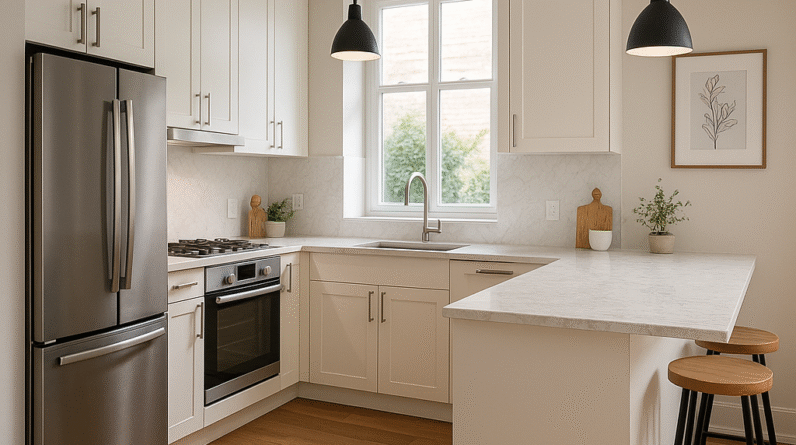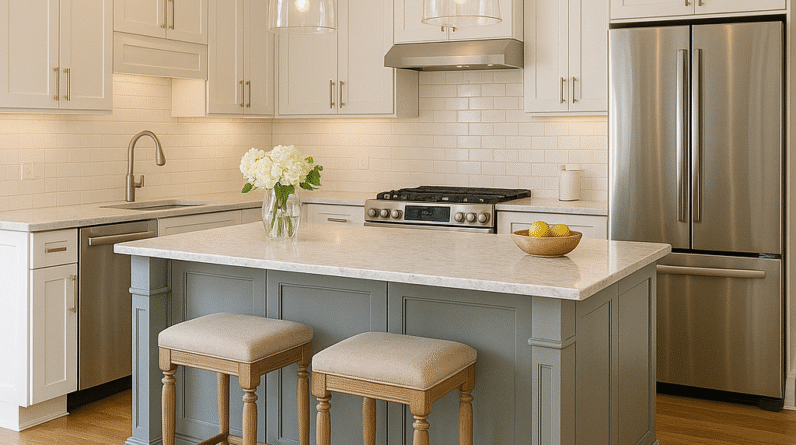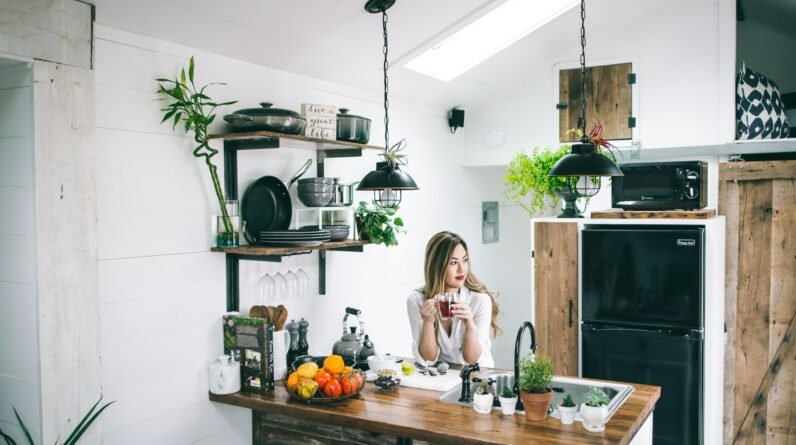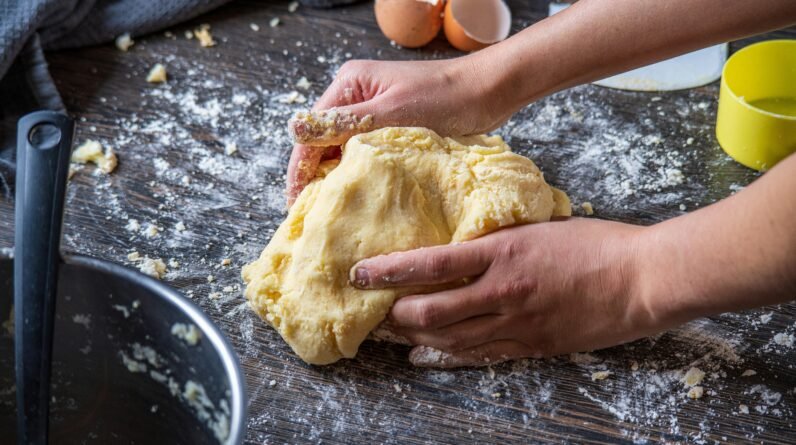
Why Is It Called Dirty Kitchen? – How Is Your Kitchen
Why Is It Called Dirty Kitchen? Have you ever wondered why it’s called a “dirty kitchen“? The term might conjure up images of a messy and unkempt space, but the truth is quite the opposite. In this article, we will explore the origins of the name and uncover the fascinating story behind the concept of a dirty kitchen. Get ready to discover the surprising secrets of this seemingly misleading name!
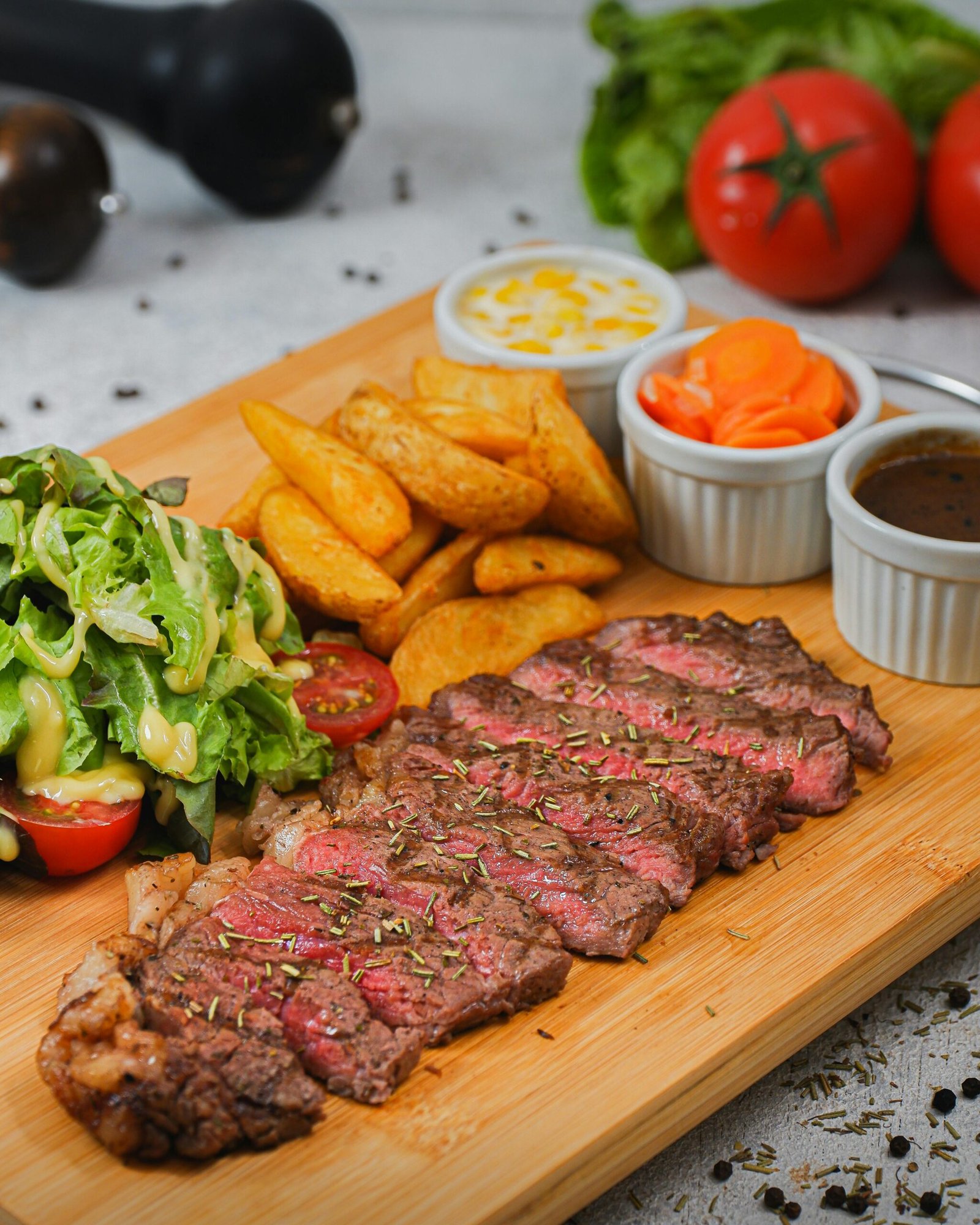
Origin of the Term
Filipino Colloquialism
The term “dirty kitchen” has its origins in the Philippines, where it is a commonly used colloquialism. It is referred to as “dirty” not because it lacks cleanliness, but because it is typically separate from the main kitchen and used for more informal and flexible cooking activities.
Evolution of the Meaning
Over time, the meaning of the term “dirty kitchen” has evolved. Initially, it may have been used to differentiate the outdoor cooking space from the main indoor kitchen. However, it now signifies a unique culinary tradition and cultural gathering space in Filipino households.
Historical Background
Early Kitchen Practices
In the early days of Filipino households, kitchen practices were significantly different from what we see today. The main kitchen was often a small enclosed area, and food was primarily prepared using traditional cooking methods. The concept of a separate outdoor cooking space like the dirty kitchen slowly emerged.
Use of Open-fire Cooking
One of the main reasons for the existence of dirty kitchens was the prevalent use of open-fire cooking methods. This required ample space and allowed for better ventilation, which reduced the risk of fire hazards and smoke accumulation indoors.
Lack of Modern Amenities
During earlier times, Filipino households lacked modern amenities like electricity and plumbing. This made it more practical to have a separate cooking space, as it provided a hygienic alternative without the need for complex infrastructure.
Influence of Spanish Colonization
The Spanish colonization of the Philippines greatly influenced the culinary practices of the locals. The introduction of new ingredients, cooking techniques, and utensils from Spanish cuisine may have played a role in the evolution of the dirty kitchen as a distinct culinary and cultural space.

Cultural Significance
Social Gathering Space
The dirty kitchen holds great social significance in Filipino culture. It serves as a gathering space for family and friends during meal preparations, encouraging communal cooking and bonding. It is not uncommon to see people chatting, sharing stories, and enjoying each other’s company while preparing meals.
Culinary Traditions
Filipino cuisine is rich in flavor and diverse in preparation methods. The dirty kitchen provides a space for the preservation and continuation of traditional culinary practices that have been passed down through generations. It ensures that these unique flavors and techniques are not lost in modern kitchens.
Hygiene and Cleanliness Perception
Despite the term “dirty kitchen,” cleanliness and hygiene are still important in Filipino households. The term refers more to the informal and relaxed nature of the space rather than any lack of cleanliness. Food safety regulations are still followed, ensuring that the prepared meals are safe for consumption.
Alternate Names
Dirty Kitchen in Other Languages
In other languages, the concept of a dirty kitchen may be referred to differently. For example, in Spanish, it is known as “cocina sucia,” while in Tagalog, it is called “maruming kusina.” These alternative names may still carry the same connotations, emphasizing the separation from the main kitchen rather than any lack of cleanliness.
Regional Variations in Names
Within the Philippines itself, different regions may have their own distinct names for the dirty kitchen. These regional variations highlight the cultural diversity across the country and the unique culinary traditions found in each area.

Functional Purpose
Additional Cooking Space
One of the primary functions of a dirty kitchen is to provide an additional cooking space. This is especially useful during occasions where large meals need to be prepared, ensuring that the main kitchen is not overcrowded and facilitating a smoother cooking process.
Prevent Heat and Odor in Main Kitchen
Cooking certain dishes can generate heat and strong odors that may linger in the main kitchen. By having a separate cooking space, the dirty kitchen helps keep these undesirable elements away from the main living areas of the house.
Flexible and Informal Cooking Environment
The dirty kitchen offers a more flexible and informal cooking environment. It allows for experimentation with traditional cooking methods, such as using open flames or grilling. Its informal nature also encourages a relaxed and enjoyable cooking experience.
Design and Construction
Separate Structure or Extension
A dirty kitchen can either be a separate structure located near the main kitchen or an extension built at the back of the house. The design choice often depends on the available space and the preferences of the household.
Open-air Layout
Traditionally, dirty kitchens have an open-air layout, allowing for proper ventilation and better control of smoke and cooking odors. This design ensures a comfortable cooking environment while minimizing the risk of fire hazards.
Simple and Economical Materials
The construction of a dirty kitchen typically utilizes simple and economical materials. Bamboo, wood, and bamboo mats are commonly used, giving the space a rustic and traditional feel. This simplicity in design and materials makes the dirty kitchen accessible to a wide range of households.
Common Features
Traditional Cooking Methods
In a dirty kitchen, traditional cooking methods take center stage. Open-fire cooking, grilling, and using traditional utensils like clay pots and bamboo skewers are common features. These methods help preserve traditional flavors and cultural practices.
Presence of Large Cooking Utensils
Due to the nature of the dirty kitchen being a communal cooking space, large cooking utensils are often used. These utensils can accommodate larger portions of food, making it easier to prepare meals for larger gatherings.
Absence of Plumbing and Electricity
Unlike modern kitchens, the dirty kitchen may not have plumbing or electricity. Water is often fetched from a nearby source, and alternative lighting sources such as candles or oil lamps are used. This simplicity allows for a more authentic cooking experience and a closer connection to traditional practices.
Modern Adaptations
Integration of Modern Appliances
In modern times, the dirty kitchen has evolved to incorporate modern appliances and conveniences. While the traditional cooking methods and communal aspect are still preserved, the inclusion of gas stoves, refrigerators, and other modern appliances has made cooking more efficient and convenient.

Transformation into Outdoor Entertainment Area
Some households have transformed their dirty kitchens into outdoor entertainment areas. With the addition of seating, dining areas, and barbecue grills, the space becomes not just a cooking area but also a place for enjoying meals, hosting parties, and creating lasting memories with loved ones.
Controversies and Stereotypes
Negative Perception of the Term
The term “dirty kitchen” has occasionally been associated with negative perceptions, implying a lack of cleanliness or hygiene. However, it is important to recognize that the term refers more to the separation of the space from the main kitchen and does not reflect any inherent uncleanliness.
Stigmatization of Traditional Culinary Practices
There has also been a stigmatization of traditional culinary practices associated with the dirty kitchen. In a society that heavily values modernization and Western influences, traditional methods and flavors may be perceived as outdated or unappealing. However, efforts are being made to promote the value and importance of preserving these culinary traditions.
Preservation and Revival Efforts
Rediscovering Traditional Cooking Techniques
There is a growing movement to rediscover and revive traditional cooking techniques associated with the dirty kitchen. This includes initiatives to document and pass down traditional recipes, educate younger generations about their cultural heritage, and promote the use of traditional cooking methods in modern kitchens.
Preservation of Cultural Heritage
Recognizing the cultural significance of the dirty kitchen, efforts are being made to preserve this unique aspect of Filipino identity. Through cultural heritage preservation programs, cooking workshops, and community initiatives, the dirty kitchen continues to be celebrated as a symbol of Filipino tradition and culinary heritage.
In conclusion, the term “dirty kitchen” in the Filipino context has evolved to represent a distinct culinary and cultural space. It serves as a social gathering area, upholds traditional cooking methods, and plays a vital role in preserving Filipino culinary heritage. Despite the negative connotations associated with the term, efforts are being made to reclaim its cultural significance and promote the value of traditional cooking practices. The dirty kitchen stands as a testament to the rich culinary traditions and community-centric values of the Filipino people.

